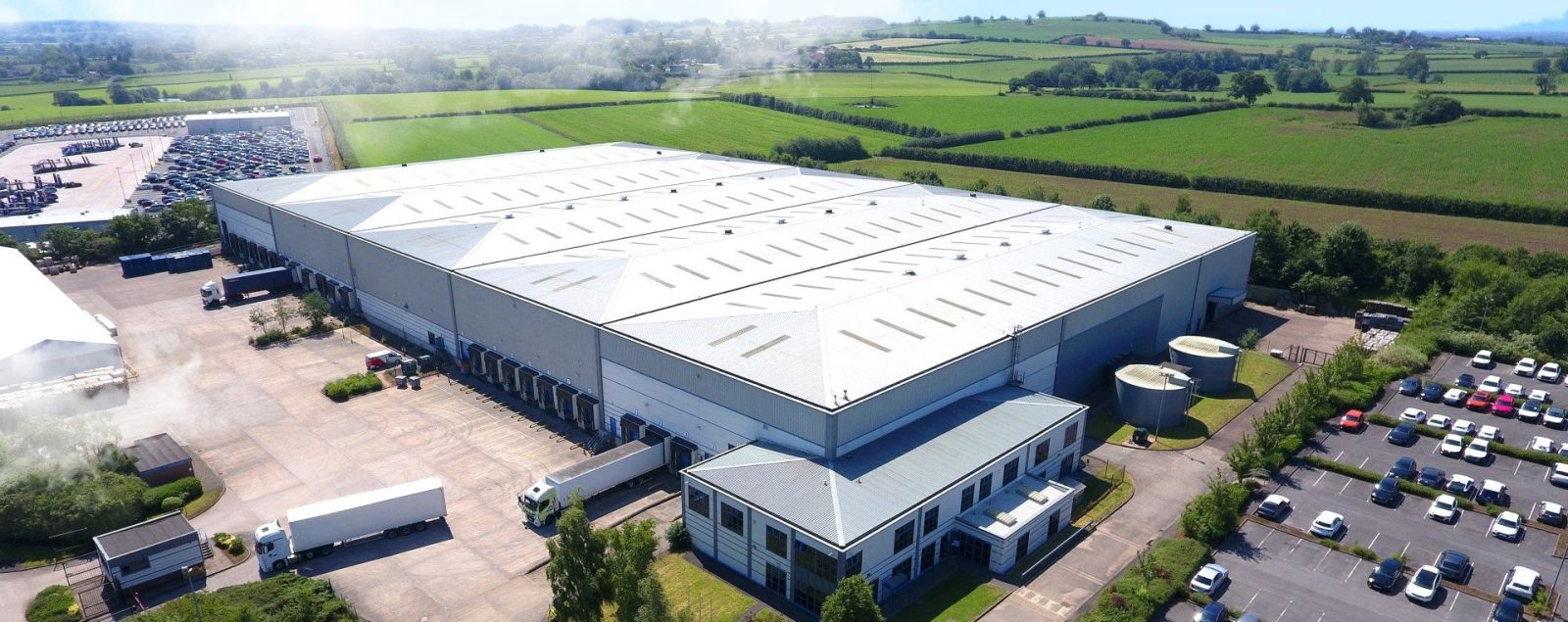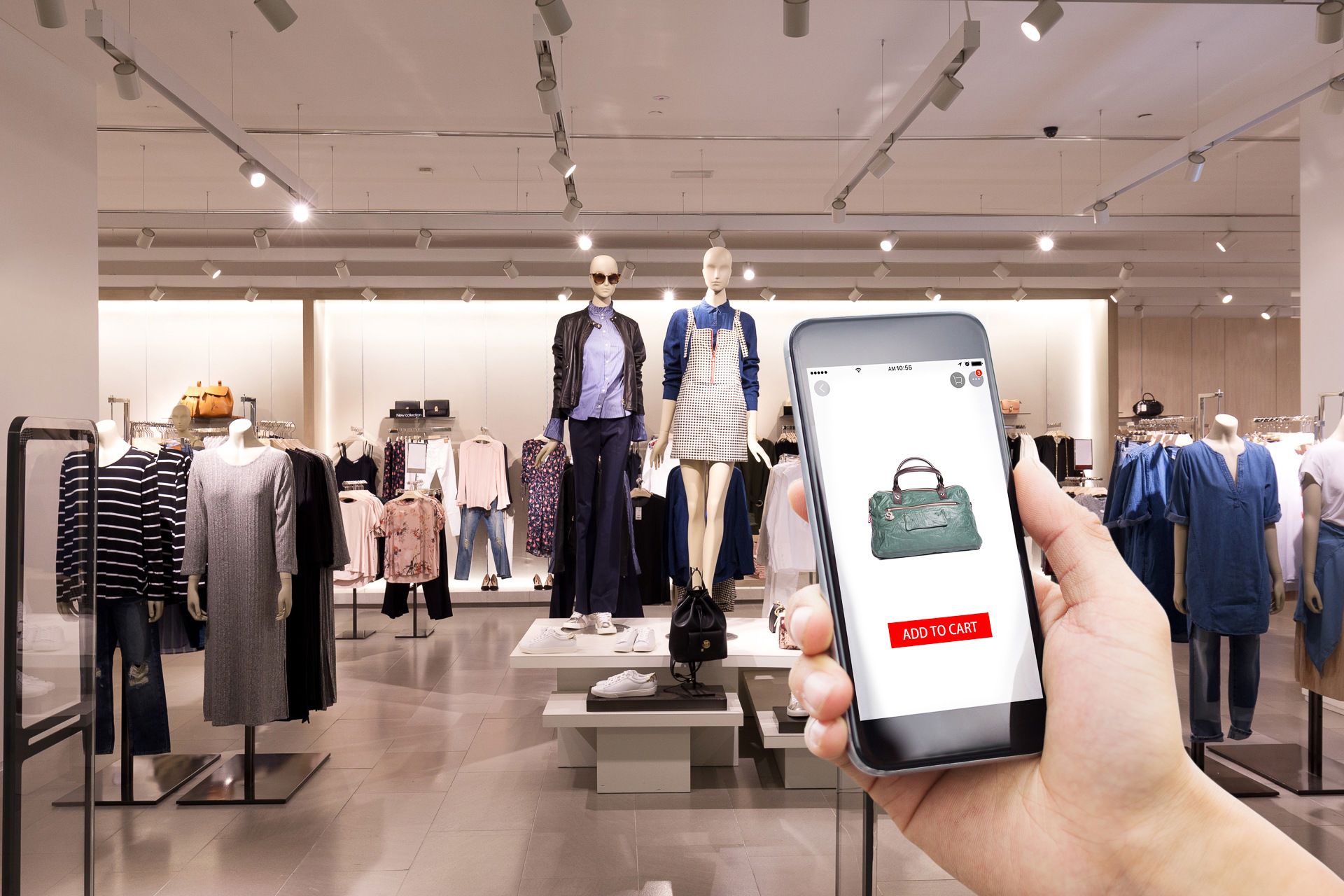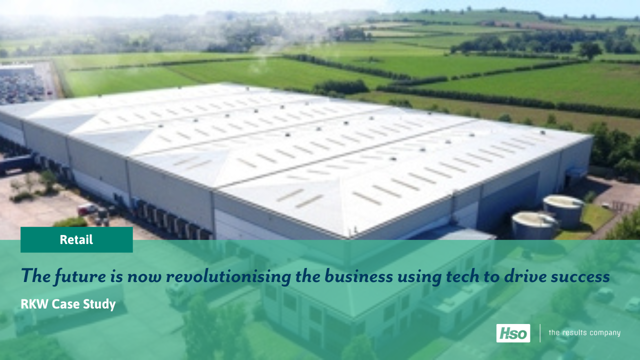Get more Retail Sector insight from HSO
Dynamics Matters Podcast: Ep 76: How to get your customers to buy more
With special guest Tony Westwater, Group I.T. Director, RKW
✔ Make it convenient for your customers to buy from you, and you won’t lose them to Amazon
✔ How to improve the interaction between you and your suppliers and partners
✔ How to keep the customer experience at the forefront
Podcast summary:
How to get your customers to buy more?
Your regular sonic dive into the world of Microsoft technology-related matters and much more besides. In this episode, lured by a promise of a good mug of builder’s tea, I met up with the excitable Tony Westwater, IT Director of distributor and online retailer RKW. A thoroughly entertaining chap, Tony is an experienced IT guy at the top of his game. And yet it’s not IT that sits at the forefront of his mind. It’s the customer. And Tony provides valuable advice on how to keep the customer experience at the forefront of everything you do.

Transcript
Michael Lonnon
Buy in store or shop online?
Tony Westwater
Both, this is what bugs me about retailers. If you go to any retailer, you’ll go into the office and they’ll say there is our retail team, there’s our ops team, they’re specialising in serving the customer and here’s our e-commerce team. So one, the two teams hate each other. The retail team will hate the Online team and vice versa because they see each other as competition, and what they don’t realise is they’ve got something completely common and that is the customer.
The customer hasn’t changed. The customer is making maybe new demands or expecting to have products delivered to them in a different way, either in store or online, but ultimately, they’re the same person. How many retailers do you see where there isn’t, I’m going to use the word synergy and I hate that word, but there is a synergy between the online and the bricks and mortar presence. The first thing I do is I’d merge both those teams.
Online is just a delivery method. If you go back 150 years, if you went into a shop, you’d stand at a counter and you’d say right, can I have some baked beans, please, and some bloke would fetch your baked beans. Then the shop progressed into the supermarket where customers would pick up the beans for themselves.
At that time, there was a big debate, this is the end of the World oh My God retail is changing. You’re still buying beans, now you’re asking me, oh, should I buy my beans online, or in a store? It’s still beans. The only thing that a customer cares about is having the right product at the right price. All you’re doing is presenting different ways of that to the customer. Stop trying to think that the customer online is going to be after a different experience than the person in the shop. They’re buying a frickin product.
So just make sure that product is as good possible and is at the right price. Now, e-commerce guys would say we’ve got content. Just a second, that guy years ago fetching you the baked beans, if you had a choice, he would start talking to you about what why you’re making the choice between these ones, and the other ones.
So having great content is not an exclusive e-commerce experience. So, bricks and mortar have to look at e-commerce and say, well, actually, the consumer is starting to expect better content around that product.
So, you’re going to see more things like QR codes or AR experiences where a consumer in store wants to see the same level of information about the product they considered buying that they can get on E-commerce.
That doesn’t mean it’s different. They’re expecting that same content experience. Otherwise, guess what, they’re going to be on their mobile phone anyway. Oh, you’re not giving it to them well, let’s go to Amazon.
If they’ve walked out if they’re walking out and saying, okay, I’m thinking about that purchase. They’ve walked out, they’re buying it on Amazon, you’re saying goodbye to that customer.
So, what does Amazon give them? Amazon gives them convenience. Customers and humans, by their nature, want everything to be as easy with the path of least resistance. So now you’re in the shop and you’re giving them the content, maybe you don’t want to carry it home I’ll tell you what, let me order that for you and send it to your house. Let me get that sent to you. Oh, we haven’t got that size.
Don’t worry, I’ll get that size. I’ll have it sent to the shop so you can try it on, and have it sent to your house so you can try it on and then whatever, right, you can send it back. The customer is after a nice, and easy, experience.
Revolutionising the business using tech to drive success
In this video Peter Sherratt, Operations Director and Tony Westwater, Group I.T. Director at RKW discuss how HSO and Microsoft Dynamics 365 will elevate RKW to another level and help to keep up with their ambitious expansion plans.
Michael Lonnon
How do you provide the right products at the right price at the right time? How do you bring those things together?
Tony Westwater
It’s a great question. I mean, it comes down to collaboration with the retailers we work with. We’re immensely proud of the brands and products we have, and we’ve got some of the best products on the market.
We have to make sure the message is consistent and delivered to the customers, if we’re going to spend lots of time, money, creating a great product and creating great content.
Let’s not just keep that as our RKW content, this makes sure we share it to our retailers, to everyone, whatever the medium is however they’re going to buy it, just make sure they have a path of least resistance.
Making it as easy as possible for the retailer to have access to imagery, content, access to videos and demos and links and so on so that the consumer is looking at a product and being able to make the right choice.
Michael Lonnon
In terms of the content, you’re showing consumers you operate as a conduit for retailers. Do you do anything different with it, I guess you’re using a product lifecycle management solution, then is that how you’re putting the information from the retailers and distributing content on your site?
Tony Westwater
Lifecycle Management is really about us getting the content correct for ourselves first. To make sure you’re distributing it right to retailers. It’s about appreciating the way they want to consume information.
So, we’ve built a data hub that will communicate not just the attributes, the information about the product, but also will give retailers instant access to the imagery to videos and all that. But the secret is we’ve got a layer between us and the retailers and a Data Hub, which lets us transform it to match exactly the retailer’s format.
So, you create this common data hub where you can raise an event and talk instantly to the retailer systems. Too often people will say, right, we’re going to integrate with your system and integrate with the ERP of the retailer and that becomes clunky, because that integration is designed especially for that retailer, so it becomes it gets lost.
You know, it doesn’t quite get supported, because it’s too specialised for that retailer. Whereas if you create yourself a Data Hub, where you actually say, let’s put a single source of all of our data and raise these custom events.
And at the very edge, all you’re doing is adding a little transform to the customers systems, then when something is changed, or we want to change something with a product, it’s in one place and then broadcasts instantly to retailers.
Retailers are picking up on this as well and they’re doing similar things on their systems. There are fantastic services from Microsoft or from Mongo, about creating NOSQL databases, to structure that non, that traditionally relational tables, which means you need that structure into a single document, a single item of information about that product, and those texts are great, and linked to the event grids or tools like Kafka that helps you broadcast it out.

Customer Case RKW
Major appliance manufacturer and distributor, RKW Limited, announces significant investment in Digital Transformation
RKW Ltd, Europe’s leading distributor and manufacturer of small domestic appliances and housewares, has seen rapid growth since its founding in 1989 and is home to over 40 leading brands including Tower, Black & Decker, Breville, Hoover, Morphy Richards, Swan and Smeg. As part of its long-term growth plans, the company has committed to substantial investment into its software and hardware infrastructure.
Michael Lonnon
Again, to make it as seamless for the customer to get information, to get content, to understand what it is and what they’re buying and why, as quickly as possible?
Tony Westwater
Yes, because we love our products. We want to make sure the message about our products is delivered as efficiently as possible. There’s nothing that’s going to upset a wholesaler more than seeing a product we’ve put so much love and attention in being poorly merchandised to the to the consumer. We want the consumer to have the best experience possible. Retailers do as well. It’s an alliance between us and them.
Michael Lonnon
What’s the biggest challenge in doing that, in creating that harmonious retailer to RKW experience, and then on to the consumer?
Tony Westwater
I guess it’s moving away from the concepts that data has to be polled and sent in huge lumps. Computers are quite happy to be chatty to send you here’s an update, here’s an update, here’s an update. So, trying to get systems and, say, retail systems to interact and be more transactional than our here’s a once-a-day poll.
People get bogged down in format, CSV, XML, it’s JSON, no, those are just delivery methods. That’s not important. Just make sure that when we react in that we’re sending you the updates, that it’s nice and sparky and quick. There’s nothing like being presented with a 6-gig file saying, well, we can send you this 6-gig file daily. Thanks. How much data is changing that I was going to be maybe one or two rows, right, brilliant, that’s really going to be seamless that is.

Is your retail business data rich but analysis poor?
In 10 minutes, this whitepaper shows you how to have only one version of the truth (data) and make the right decisions for your retail business.

Michael Lonnon
What’s next? It sounds like you understand your challenges. I love what you’re saying there, you’re saying the customer comes first. Everything else is built around seamless engagement with the customer. So what’s next?
Tony Westwater
Okay, so, again, it’s just making sure that as much of our information is as accessible as possible. So, most people are moving to the cloud because they’ve seen an advert and they think, hey, that’s a good idea. Okay, we’re moving to the cloud, because it’s going to offer scalability and accessibility.
We want our consumers and retailers to access what they need from us as quick as possible, and the best way of doing that is in the cloud. We want to work with and create services that retailers can interact with for grabbing imagery. We’ve even got an automatic PowerPoint builder that’s built in the cloud.
HSO have already been looking at that, but it’s a great little kit. So, a consumer retailer’s going to build up a quote and what they want to do is have all the assets to deal with that quote to hand, and we’ve got a theme that builds up a dynamic path, PowerPoint, that then presents this information.
Where’s that going to go next? Well, think about things like Power BI. Let’s start nesting, this is good, this is going to mix your melon here. Why not nest the Power BI in the PowerPoint?
So they’re looking at your quote and, by the way, here’s all your data to do with how that frying pan is sitting in the sector and you can interact with in in Power BI.
Microsoft are ahead of the game on delivering this. No one’s using it, but it’s only because my audio book was talking about that last night on the bike home and I was thinking, what a great idea what a change in paradigm where you’re saying, right, okay, we’re going to have this, all your content and all of your data just there for you to consume in your own machine.
Big mistake is when you see people say, oh, we’re going to interact with you, here’s your log on, go to this website, you can download. I don’t want to download.
Why do I have another log on to a website to download information. Let my systems talk to your systems and then we can grab it and you can take what you want, and we take what we want and then your figures will appear in our reports, or I will link our data lake to your data sources, and then build that through a pipeline into our data warehouse. I don’t need to log on.
I don’t want to log on to your website to grab information. That means I need a human; the human doesn’t want to be doing the mundane. They want to be looking at the figures and doing what humans are great at, thinking about it, and looking at exceptions and unusual things and finding patterns. Let the computers do the boring stuff.
Now, if you’re saying to your users, you’re just going to have to log on to this site and download this file you’re turning them into computers, and they’re going to be bored and if they’re bored, they make mistakes.
Michael Lonnon
You are clearly passionate; you clearly know what you’re doing. You keep pushing the boundaries, which is fantastic to hear. But what keeps you up at night?
Tony Westwater
What keeps me up at night? Oh Blimey. I feel sorry for my staff because what I will do when I get stressed about a project, when you think how are we going to do this, I’m very deliberate in saying, okay how am I going to take that step to make it better? I’m not necessarily talking about fixing the problem, right.
How am I going to go on that journey towards finding a solution? So, it might be something daft like the way we’re interacting with a particular retailer and thinking about how we shape the data that way. You know what, I’m going to grab that person first thing in the morning, and they’ll get messages from me on Teams at 3am as I want to meet him at 9am because I want to talk.
And it’s not about saying right, here’s the problem, lets ignore that for a while. What’s going to be the milestones what’s going to be the lines in the sand that helps us get us closer to solving that problem and I’m very sad when I’m being kept up at night is because I’m trying to think through what are those milestones? What are the steps that I’m going to take.
Summary
Everything you do should be done with the customer in mind. Your job is to make their experience as convenient as possible. In the digital or instore experience, in the content you provide, in your pricing or positioning. Part of achieving this relies on improving interaction between you and your suppliers, partners, and contributors, creating a path of least resistance for customers.
Make it convenient for your customers to buy from you and you won’t lose them to Amazon, or another.
Thanks for listening, until next time, take care of yourselves.


